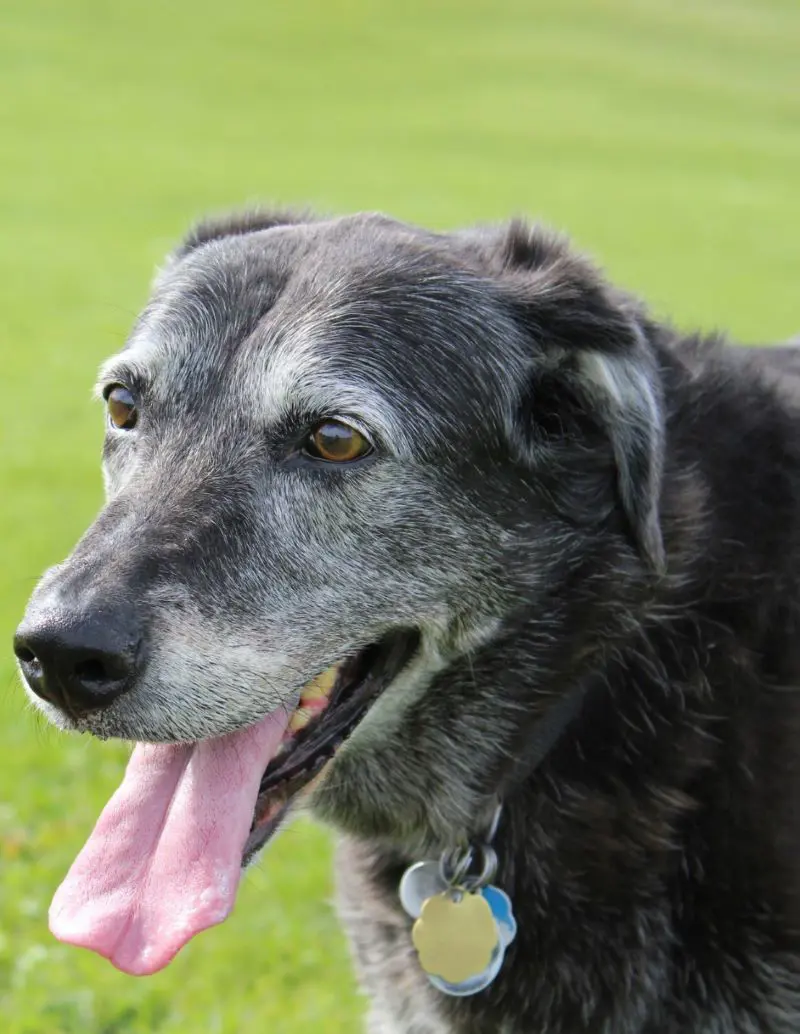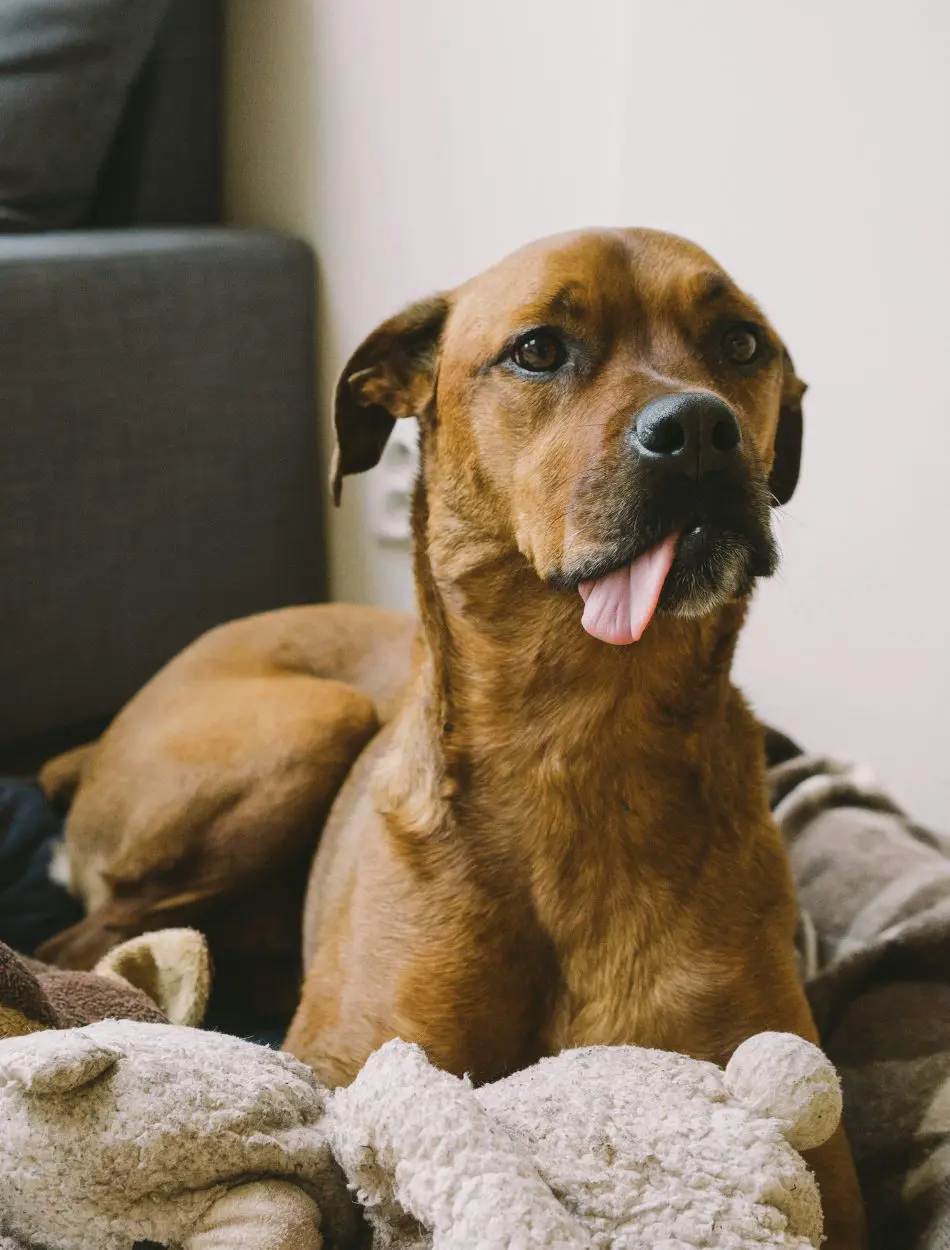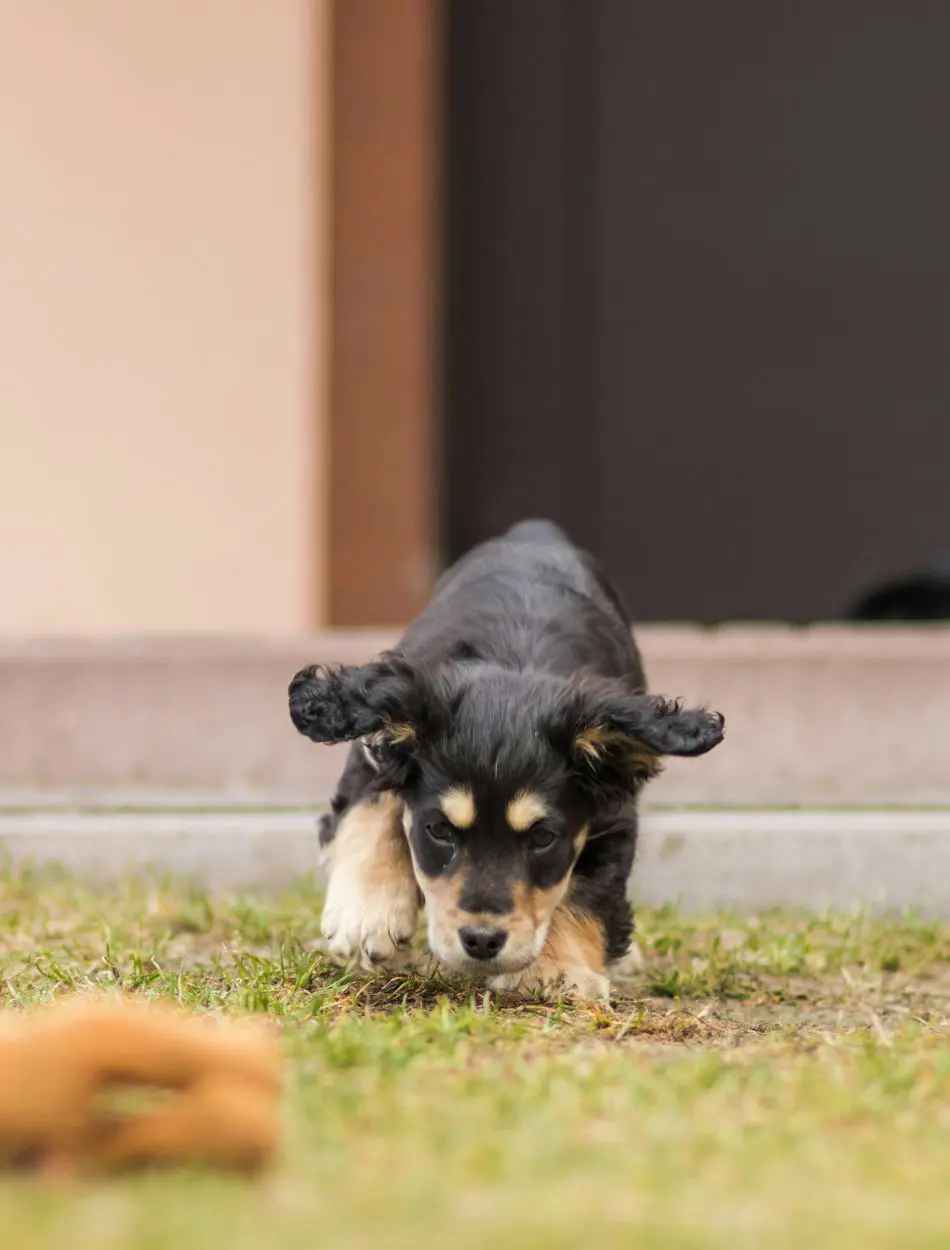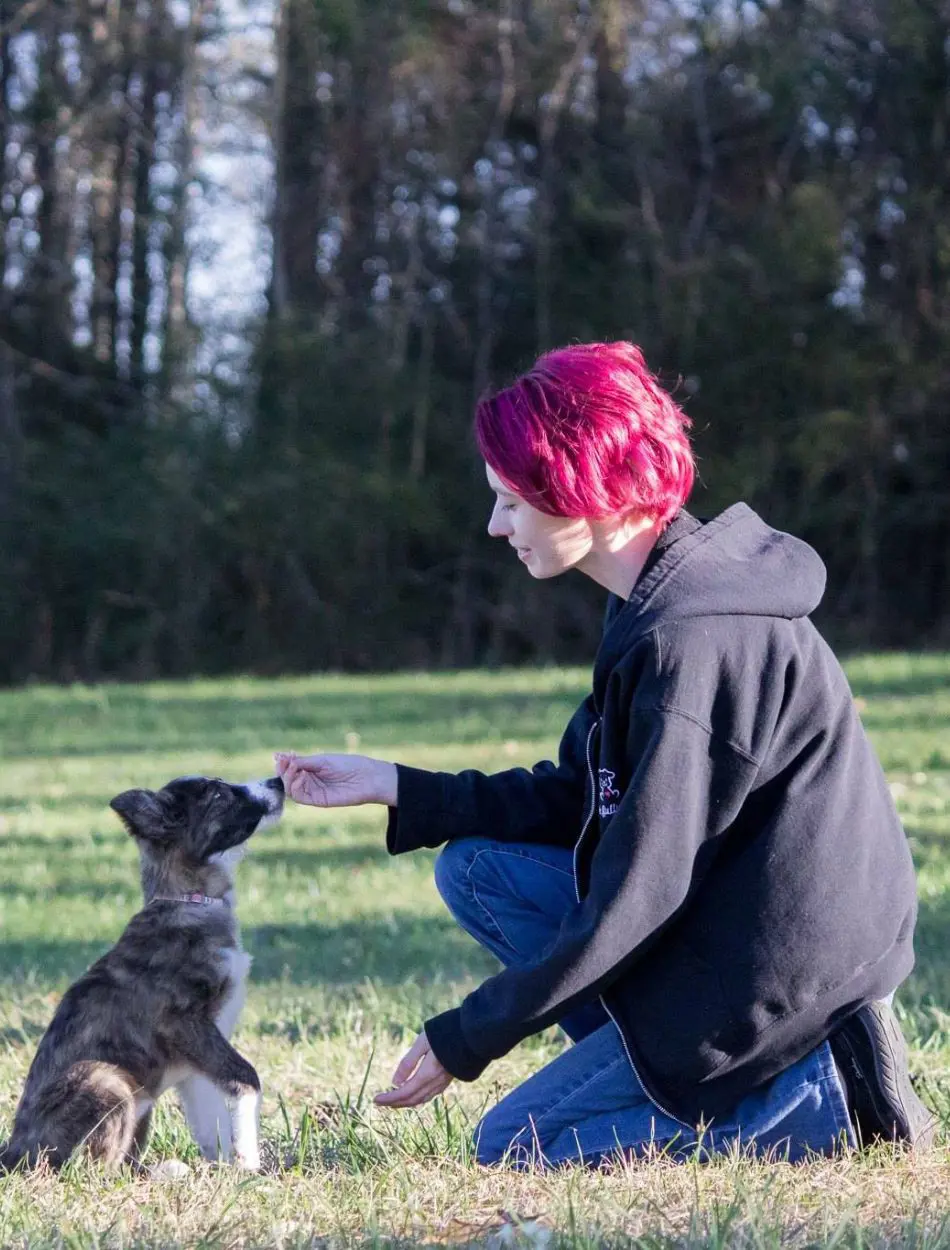Why Is My Dog Panting? 18 Reasons For Breathing Fast

Dog owners are often in tune with their pet's behavior. Some dogs hide or seek solitude when unwell or scared, some are noisy snorters, and some stare at their owners for food or attention. But have you recently noticed your dog breathing fast, panting, or snorting abnormally?
Normally, dogs take between 10 to 35 breaths per minute when at rest. During exercise, this rate can increase significantly, even up to 10 times more. Anything above 40 breaths per minute at rest is abnormal and needs attention.
Here are 18 possible reasons why your dog is panting more than usual.
1. Exercise and Excitement

Vigorous exercise or excitement can cause your dog to breathe fast and pant as a natural response to increased physical activity and emotional arousal. When a dog exercises intensely, its body demands more oxygen to fuel its muscles, leading to an elevated breathing rate to meet this need.
Similarly, excitement triggers a release of adrenaline, which increases heart rate and respiratory rate. Dogs don't cool down by sweating like humans, so panting helps regulate their body temperature by releasing heat through their tongue and respiratory system.
While this is a normal reaction, ensure your dog has time to rest and rehydrate to recover from the exertion.
2. Heatstroke
My dog might be breathing heavy due to heatstroke as their body struggles to regulate temperature. When dogs are exposed to excessive heat, especially in hot weather or confined spaces without adequate ventilation, their internal temperature rises rapidly.
This triggers rapid breathing and panting as the dog attempts to cool down.
Additionally, heatstroke can lead to dehydration and stress on the heart and lungs, further accelerating their breathing rate. This condition poses a serious threat to their health, often accompanied by symptoms such as:
- Red gums or tongue
- Dry nose
- Faster heart rate
- Vomiting
- Difficulty rising
3. Stress and Anxiety
When a dog feels stressed or anxious, their body goes into "fight-or-flight" mode. This prepares them to deal with a perceived threat. During fight-or-flight, the body needs more oxygen to deliver energy to the muscles. To take in more oxygen, dogs breathe faster, which is a normal physiological response.
While some degree of increased breathing during stressful situations is normal, persistent or severe anxiety can lead to chronic fast breathing, which may indicate underlying behavioral or health issues. It's important to observe your dog's behavior and provide a calm environment to help alleviate stress.
4. Pain

Pain can cause rapid breathing in a dog. When a dog is in pain, their body's stress response is activated, leading to an increase in heart rate and respiratory rate. This heightened physiological reaction helps the body cope with discomfort or injury.
Fast breathing serves as a mechanism to manage pain by potentially reducing muscle tension and distributing oxygen throughout the body.
Despite dogs often concealing their pain, you can observe changes in their daily behavior, activity levels, and body language when they're in physical discomfort.
In addition to changes in breathing, signs of pain may include altered vocalization, dilated pupils, flattened ears, and changes in eating, sleeping, or drinking habits.
5. Anemia

Anemia is a condition where the blood doesn't have enough red blood cells or hemoglobin, the protein in red blood cells that carries oxygen. This means less oxygen is delivered to the body's tissues, including the muscles. The body tries to compensate for this lack of oxygen by increasing its respiratory rate.
Your dog might be breathing weird as they take in more oxygen with each breath, attempting to meet the body's needs. Faster breathing puts more work on the heart and lungs to try and circulate enough oxygenated blood. This can lead to labored breathing, where the dog seems to be struggling to breathe.
So, fast breathing in an anemic dog is a sign that the body is working harder to get the oxygen it needs.
6. Congestive Heart Failure
Congestive heart failure (CHF) occurs when the heart is unable to pump blood effectively, leading to fluid accumulation in the lungs (pulmonary edema) or other parts of the body. When fluid builds up in the lungs, it reduces the ability of the lungs to oxygenate the blood properly.
To compensate for this decreased oxygenation, dogs breathe faster (tachypnea) to try to obtain more oxygen.
Additionally, the heart's inability to efficiently pump blood can lead to fluid accumulation in the abdomen or extremities, further complicating breathing and causing discomfort. Additional signs of CHF include:
- Coughing, especially at night
- Exercise intolerance
- Sudden collapse after activity or excitement
7. Nausea
Nausea can cause gasping in dogs due to its association with the autonomic nervous system's response to discomfort. When dogs feel nauseous, their body initiates a stress response, triggering an increase in heart rate and respiratory rate.
This physiological reaction is aimed at preparing the body to deal with potential threats or discomfort.
The sensation of nausea itself can induce shallow and rapid breathing as the dog attempts to cope with the feeling and possibly alleviate discomfort. Additionally, nausea might sometimes cause a dog to lick its lips excessively, which can lead to a temporary increase in breathing rate.
8. Smoke Inhalation
Smoke inhalation disrupts a dog's breathing in several ways, leading to fast breathing:
- Irritation: Smoke contains harsh chemicals and particles that irritate the airways, causing inflammation and swelling. This narrowing of the airways makes breathing difficult, forcing the dog to breathe faster to get enough oxygen.
- Oxygen Depletion: Certain gases in smoke, like carbon monoxide, can bind to hemoglobin in red blood cells, reducing the amount of oxygen carried throughout the body. This lack of oxygen further stimulates faster breathing as the dog tries to compensate.
- Lung Damage: Hot smoke can burn the delicate lining of the lungs, causing fluid buildup and hindering oxygen exchange. This damage makes breathing more laborious, leading to rapid and shallow breaths.
9. Lung Diseases

Lung diseases like cancer, parasitic infections, and pneumonia all cause fast breathing in dogs by affecting the lungs' ability to efficiently process oxygen. Here's a breakdown for each:
- Cancer: Tumors in the lungs can block airways, reducing the space available for air to pass through. This forces the dog to breathe faster to take in the same amount of oxygen. Additionally, cancer can damage lung tissue, hindering the transfer of oxygen to the bloodstream, further stimulating rapid breathing.
- Parasitic Infections: Parasites like lungworms can irritate and inflame the airways, similar to smoke inhalation. This narrowing makes breathing difficult and triggers faster breaths to compensate. Additionally, some parasites can even reduce the oxygen-carrying capacity of red blood cells, further worsening the situation.
- Pneumonia: This infection causes the air sacs in the lungs to fill with fluid. This fluid reduces the space available for gas exchange, making breathing difficult. To compensate, the dog breathes faster and shallower, attempting to get enough oxygen.
10. Asthma
Puppy breathing fast while asleep is usually due to airway inflammation and constriction. When dogs with asthma are exposed to triggers like allergens, pollutants, or stress, their airways become inflamed and narrowed.
This constriction makes it harder for them to breathe normally, leading to rapid and shallow breathing as they try to compensate for reduced airflow.
Further, asthma can cause mucus production, further obstructing the airways and worsening breathing difficulties. Dogs may exhibit other signs such as wheezing, coughing, and increased effort to breathe during asthma attacks.
11. Kennel Cough
Kennel cough (infectious tracheobronchitis) can cause fast breathing in dogs due to its impact on the respiratory system.
This highly contagious respiratory infection is typically caused by viruses and bacteria like Bordetella bronchiseptica. It affects the lining of the dog's upper respiratory tract, leading to inflammation of the trachea and bronchi.
This infection results in a dry, harsh cough that can provoke rapid breathing as dogs try to clear their airways. The irritation and inflammation in the respiratory tract can trigger increased respiratory rate and effort, especially during periods of activity or excitement.
While kennel cough is generally mild, severe cases can progress to pneumonia, worsening breathing difficulties.
12. Trachea (Windpipe) Issues
Tracheal issues in dogs can cause fast breathing due to structural or inflammatory conditions affecting the windpipe (trachea). Conditions like tracheal collapse, where the tracheal walls weaken and collapse during breathing efforts, restrict airflow and lead to rapid, labored breathing.
Similarly, tracheitis, inflammation of the tracheal lining often caused by infections or irritants, can provoke coughing fits and increased respiratory rate as the dog tries to clear the airway.
These issues compromise the trachea's ability to conduct air effectively, prompting the dog to breathe faster to compensate for reduced airflow. Symptoms may worsen during physical exertion or excitement.
13. Rhinitis

Rhinitis in dogs refers to inflammation of the nasal mucosa, often caused by infections, allergies, irritants, or foreign objects. This condition can lead to fast breathing as it affects the dog's ability to breathe through the nose effectively.
When the nasal passages are inflamed and congested, dogs may resort to mouth breathing, which can result in faster respiratory rates as they try to compensate for reduced airflow through the nose. Additionally, nasal discharge, sneezing, and discomfort associated with rhinitis can exacerbate respiratory efforts.
Monitoring for symptoms such as sniffling, nasal discharge, frequent sneezing, and rapid breathing is essential.
14. Collapsing Trachea
A hernia in dogs refers to the protrusion of an organ or tissue through an abnormal opening or weakened area in the body wall. Hernias can occur in various locations, including the abdominal wall (abdominal hernias) or the diaphragm (diaphragmatic hernias).
While hernias themselves typically do not directly cause fast breathing, complications from hernias, such as organ displacement or constriction of organs, can lead to respiratory distress.
For example, a diaphragmatic hernia may compress the lungs or interfere with their expansion, causing labored breathing.
In some cases, if a hernia involves abdominal organs pushing into the chest cavity, it can affect the lungs' ability to fully inflate and deflate, leading to increased respiratory effort.
15. Laryngeal Paralysis
Laryngeal paralysis in dogs is a condition where the muscles that control the opening and closing of the larynx (voice box) become weak or paralyzed, leading to breathing difficulties.
The larynx normally opens widely during inhalation and closes during swallowing to prevent food from entering the airway. When paralyzed, the larynx cannot open fully, restricting airflow into the lungs.
Dogs with laryngeal paralysis often exhibit rapid, noisy breathing, especially during exertion or excitement, as they struggle to draw in sufficient air through the narrowed airway. This condition can also lead to overheating and exercise intolerance due to the increased effort required to breathe.
16. Age
As dogs age, their bodies undergo various changes, including a gradual decline in the efficiency of their respiratory systems. Older dogs may breathe faster due to several age-related factors.
One primary reason is the weakening of respiratory muscles, which can make it more difficult for them to draw in enough oxygen with each breath.
17. Obesity
Obesity in dogs is a growing concern, affecting their overall health and quality of life. It occurs when a dog consumes more calories than it burns, leading to excessive fat accumulation.
This condition is often the result of overfeeding, lack of exercise, or a combination of both. Obesity can lead to a host of health problems, including diabetes, heart disease, and joint issues like arthritis. The extra weight puts additional strain on the dog’s body, particularly on the joints and cardiovascular system, making it harder for the dog to move and breathe.
18. Fever
When a dog has a fever, its body temperature rises above the normal range, often as a response to infection, inflammation, or illness. This increase in temperature can lead to faster breathing.
Fever can cause a dog’s metabolism to speed up, requiring more oxygen and increasing the demand on the respiratory system. This results in faster breathing as the body attempts to meet its heightened oxygen needs and manage the elevated temperature.
What Can You Do To Monitor Your Dog’s Breathing?

Monitoring your dog's breathing is essential for detecting any abnormalities early on. Here are some steps you can take to monitor your dog's breathing:
- Observe Resting Breathing: Watch your dog while they are resting or sleeping to observe their normal breathing pattern. A healthy dog typically takes 10-35 breaths per minute at rest.
- Check for Changes: Be attentive to any changes in breathing rate or effort. Rapid, shallow breathing (tachypnea), noisy breathing, or labored breathing could indicate an underlying issue.
- Note Activity Level: Monitor breathing during activities like exercise or play. Dogs may naturally breathe faster during exertion, but excessive panting or prolonged recovery time afterward can signal a problem.
- Look for Physical Signs: Watch for signs such as flared nostrils, exaggerated chest movements, or bluish gums, which may indicate respiratory distress.
- Listen for Sounds: Pay attention to any unusual sounds like wheezing, coughing, or noisy breathing that could suggest a respiratory issue.
- Regular Vet Check-ups: Schedule regular veterinary check-ups where the vet can assess your dog's overall health, including respiratory function.
- Keep Environment Safe: Ensure your dog is not exposed to smoke, chemicals, or extreme temperatures that could affect breathing.
By staying vigilant and noting any changes in your dog's breathing patterns, you can help identify potential health concerns early and seek appropriate veterinary care.
Recent posts
Dogs
Why Do Dogs Pee In The House?
Uncontrolled peeing inside the house is usually perceived as a sign of a poorly-disciplined dog. However, it may not always be true as the canine could be suffering from a medical issue or cognitive decline. And, getting made is not the solution as y...
Dog Sleeping Positions And Their Meanings
The diverse sleeping dog positions of our furry companions unveil a fascinating tapestry of behaviors and emotions in the canine realm. From the classic Curler to the enigmatic Superman, each posture conveys a unique message about a dog's well-being ...
Dog In Heat: When It Happens And How Long Does It Last
A female dog will get to the phase of reproduction known as the heat cycle if she has not been spayed. If you have an unspayed female dog, it's vital to understand the stages of her heat cycle. During heat, a canine's conduct may additionally c...
15 Causes of Dog Losing Hair
Occasional hair loss and shedding is a natural physical process in dogs. Seasonal shedding helps remove dead and excessive hair from their body. But, when a dog starts losing excessive hair, it can be a terrifying sight for pet owners. Often, dog par...
18 Signs A Dog is Dying
Recognizing the signs that a dog is dying can be heartbreaking, but it's far more essential to offer comfort in their final days. The signs consist of changes in behavior and constant hunger indicating that it may be time to say good-bye. Owners who...
15 Reasons Why Dogs Eat Poop And How To Stop It
Dogs sometimes engage in odd and unhealthy behaviors, along with ingesting their poop or that of different animals. This habit may be concerning and disgusting for any pup owners. This habit has many motives, however, the secret is locating eff...







